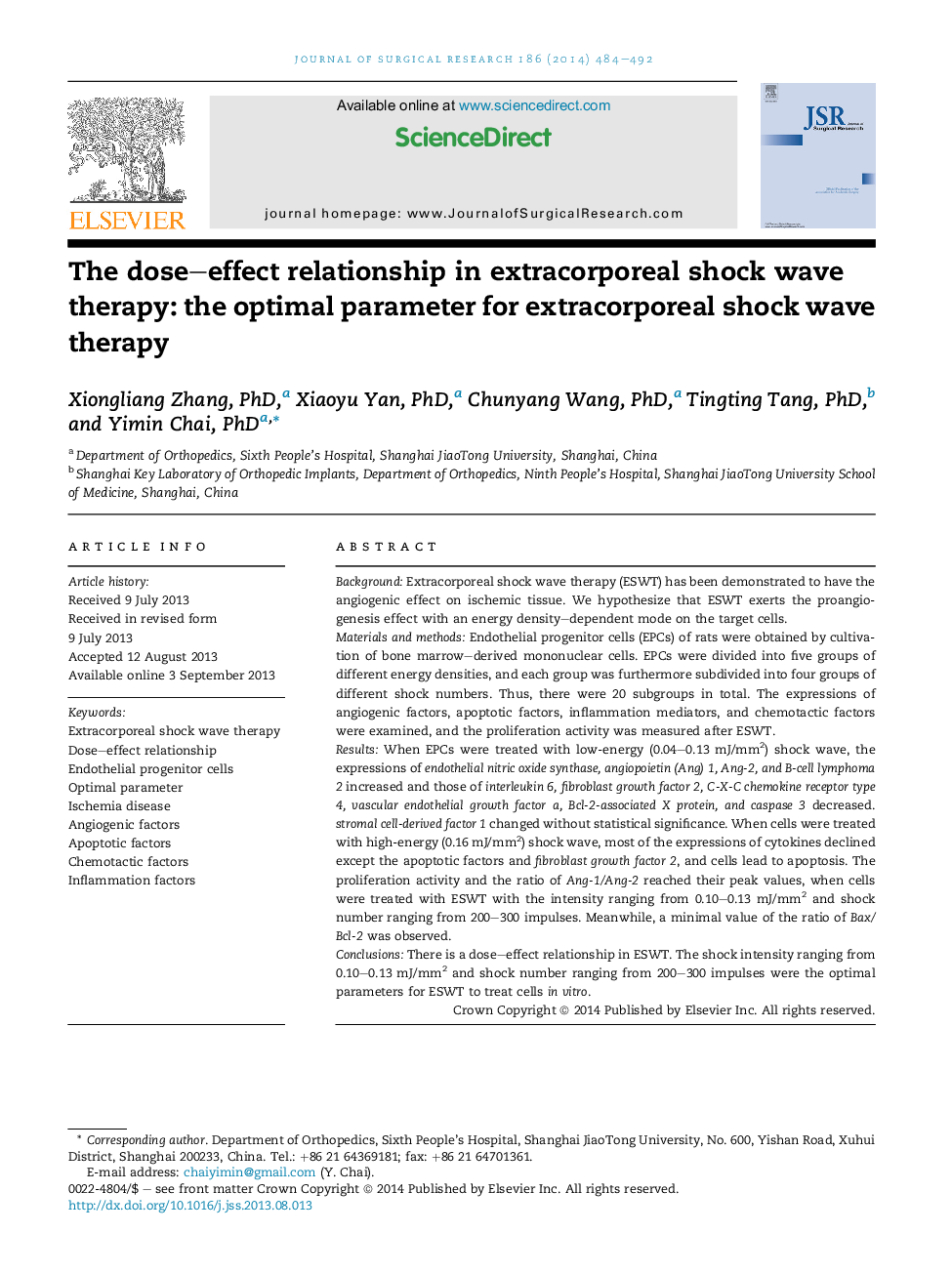| Article ID | Journal | Published Year | Pages | File Type |
|---|---|---|---|---|
| 6254258 | Journal of Surgical Research | 2014 | 9 Pages |
BackgroundExtracorporeal shock wave therapy (ESWT) has been demonstrated to have the angiogenic effect on ischemic tissue. We hypothesize that ESWT exerts the proangiogenesis effect with an energy density-dependent mode on the target cells.Materials and methodsEndothelial progenitor cells (EPCs) of rats were obtained by cultivation of bone marrow-derived mononuclear cells. EPCs were divided into five groups of different energy densities, and each group was furthermore subdivided into four groups of different shock numbers. Thus, there were 20 subgroups in total. The expressions of angiogenic factors, apoptotic factors, inflammation mediators, and chemotactic factors were examined, and the proliferation activity was measured after ESWT.ResultsWhen EPCs were treated with low-energy (0.04-0.13 mJ/mm2) shock wave, the expressions of endothelial nitric oxide synthase, angiopoietin (Ang) 1, Ang-2, and B-cell lymphoma 2 increased and those of interleukin 6, fibroblast growth factor 2, C-X-C chemokine receptor type 4, vascular endothelial growth factor a, Bcl-2-associated X protein, and caspase 3 decreased. stromal cell-derived factor 1 changed without statistical significance. When cells were treated with high-energy (0.16 mJ/mm2) shock wave, most of the expressions of cytokines declined except the apoptotic factors and fibroblast growth factor 2, and cells lead to apoptosis. The proliferation activity and the ratio of Ang-1/Ang-2 reached their peak values, when cells were treated with ESWT with the intensity ranging from 0.10-0.13 mJ/mm2 and shock number ranging from 200-300 impulses. Meanwhile, a minimal value of the ratio of Bax/Bcl-2 was observed.ConclusionsThere is a dose-effect relationship in ESWT. The shock intensity ranging from 0.10-0.13 mJ/mm2 and shock number ranging from 200-300 impulses were the optimal parameters for ESWT to treat cells in vitro.
